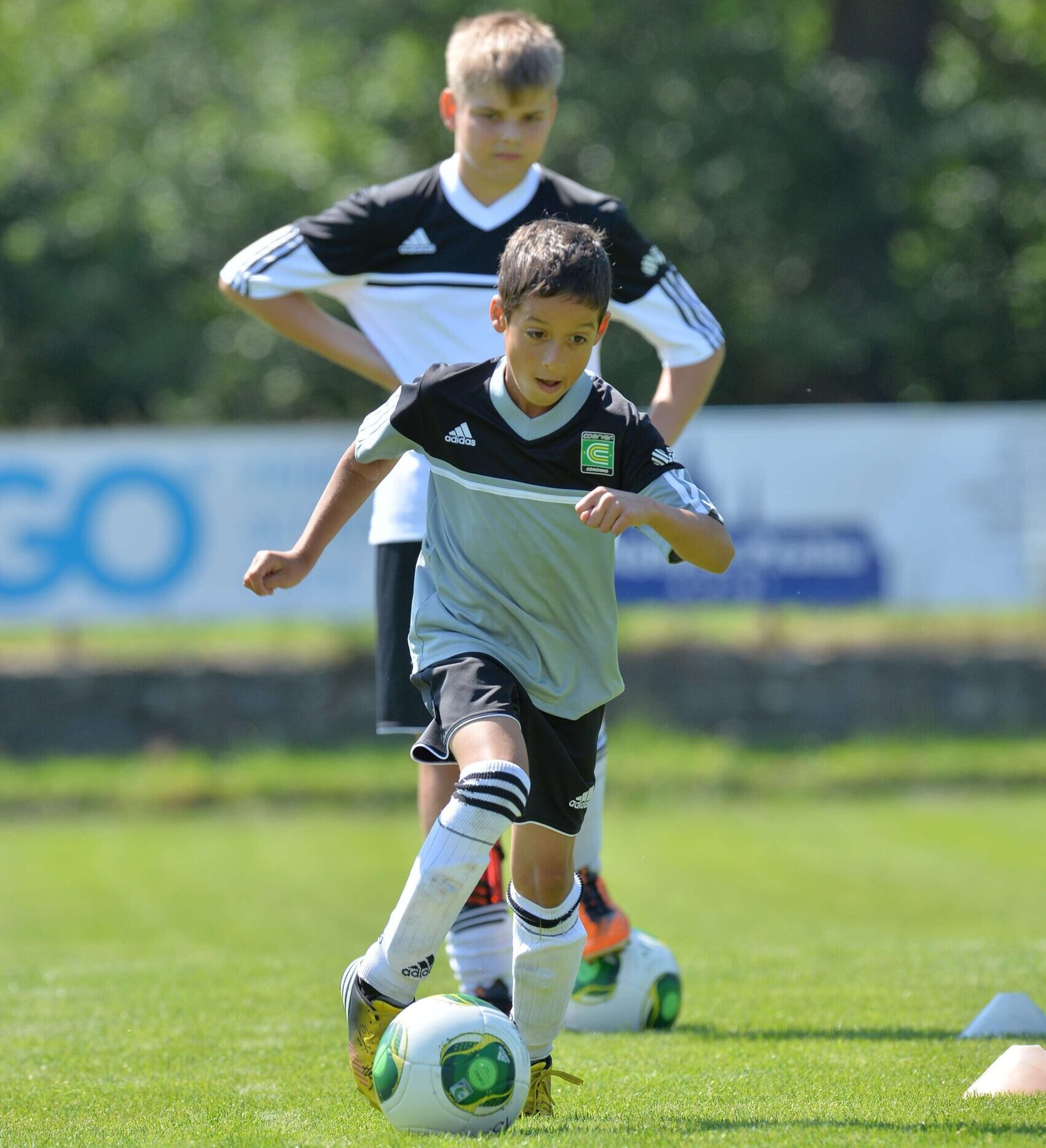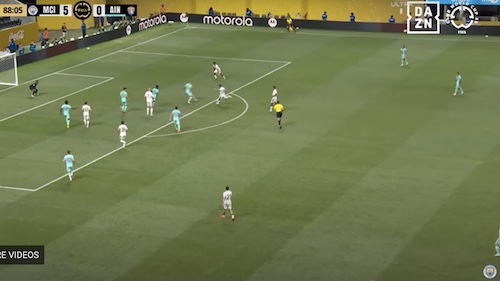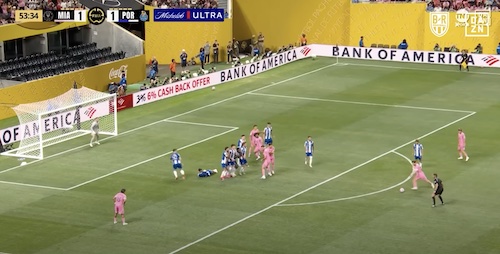Here are some ideas for soccer training workouts to follow that will keep you fit during the soccer season and help prevent injuries. This is a soccer workout plan that will help you get stronger, faster and prevent hamstring injuries. But this soccer workout routine also includes the soccer ball! Of course, very workout routine should have some ball work included in it. It’s kind of a reward, say you do some push ups or sit-ups or sprint work, then you get some time working with the ball as a reward.
After reading all the information about the different training exercises for soccer players and working on our footwork skills, you’re probably wondering how you can combine them into a workout routine so you can get stronger and more flexible.
Well, if you are, then read on and take a look at some of the examples listed below. But remember, don’t be afraid to make modifications to your regimen. Each player is different! And if you have questions, consult a coach or trainer. Good luck! Again, the key is consistency with your soccer training program. Work on a skill on a regular basis and you will improve!
NEW: For soccer coaches, if you want to make setting up your soccer practices easier, take a look at the Soccer Session Planner by Coerver.
Soccer training workouts:
Many soccer players are under the misunderstanding that in order to get a good quality individual training session, you need lots of high tech and expensive equipment to set up drills. In today’s video, I show you my full training session using nothing but a soccer ball to work on many different aspects of my game. Whether you’re traveling and don’t have access to equipment or can’t afford it, you can use these drills to ensure you never miss a day of training and can always improve your game.
If you’re looking for a sample soccer routine or an individual soccer training program then you can also go to this page here. Below is a routine focused on weight lifting and stretching exercises with soccer ball work mixed in.
You can modify this schedule to what fits you best, as long as you incorporate all of these elements frequently. But it’s a good idea to avoid strength training your legs every day so that they have a chance to recover and rebuild the muscle fibers. On the days you’re not doing plyometrics, you can still weight train, but focus on the upper body. As for what and how much to work, try this workout, three sets each.
Soccer training workouts:
Day 1–> Stretching–> Sprints –> Plyometrics –> Weights (lower) –> Ball work –> Stretching
Day 2 –> Stretching –> Balance –> Shuttle run –> Ball work –> Sit-ups –> Pushups –> Weights (upper) –> Stretching
Day 3 –> Stretching –> Distance run –> Sprints –> Ball work –> Stretching
Day 4 –> Stretching –> Shuttle run –> Ball work –> Sit-ups –> Pushups –> Plyometrics –> Weights (lower) –> Stretching
Day 5 –> Stretching –> Balance –> Weights (upper) –> Distance run –> Sprint –> Ball work –> Stretching
Day 6–> Stretching –> Shuttle run –> Sit-ups –> Pushups –> Weights (optional) –> Ball work –> Stretching
Day 7–> Day Off
Upper body: Benchpress –> pec-fly/butterfly –> incline press –> lat pulldown –> compound row –> tricep extensions (cables or dumbbells) –> dips –> bicep curls –> concentration curls
Lower body: squats or leg press –> leg extension –> leg curls –> lunges –> abs –> calf raises
We have teamed up with Puma and Untraditional Coach to help you train at home, the same way as your idols. In this first episode, we will do a total body workout.
For more examples of lower body exercises, check out the section, Lift with Your Legs!
Also, you shouldn’t do plyometrics on a day you do long distance running. You don’t want to overexert your legs and possibly injure yourself. If the routine above gets boring, switch it up a bit to what best fits your body.
Balance exercises can easily be added to your training. Since most of these tend not to require a lot of physical strength and endurance, do them on a less strenuous day, or at a time of day when you feel your legs can handle them (preferably the morning).
TIP: You can never do enough skill work on the ball though! Make sure to get plenty of this in your daily routines, whether it’s through regularly scheduled practice or by working it further into your training regimen.
Really, if you want to play in college or professional soccer you will need to spend time with the ball everyday, whether it’s juggling, dribbling or knocking the ball against a wall. If you want to play at a high level you love playing soccer anyway and will want to work with the ball everyday.
Also, seek out pickup soccer games and try to play with players who are better than you. The more actual games you can play with and against better soccer players the better you will become. The key is to look for intense and challenges place to play, which force you to play under presure. Older and more experienced players will happily let you play if you work hard and stay true to the game – meaning you’re not trying to always dribble or do the fancy tricks or moves but play simple, one and two touch soccer.
NEW: Check out these soccer training programs by position:
- Training Sesssion for Forwards
- Training Sesssion for Central Defenders
- Training Sesssion for Central Midfielders
- Training Sesssion for Right Midfielders
- Training Sesssion for Left Midfielders
- Training Sesssion for Right Backs
- Training Sesssion for Left Backs
And then a training session to improve speed:
This young kid, who I believe plays for Bayern Munich’s youth academy team, is incredible. His skills on the ball are amazing. Take a look.
This kid from Bayern’s academy is absolutely incredible…
@AssassinsSoccer pic.twitter.com/4qG6vRTi5X
— Empire of the Kop (@empireofthekop) March 8, 2017















